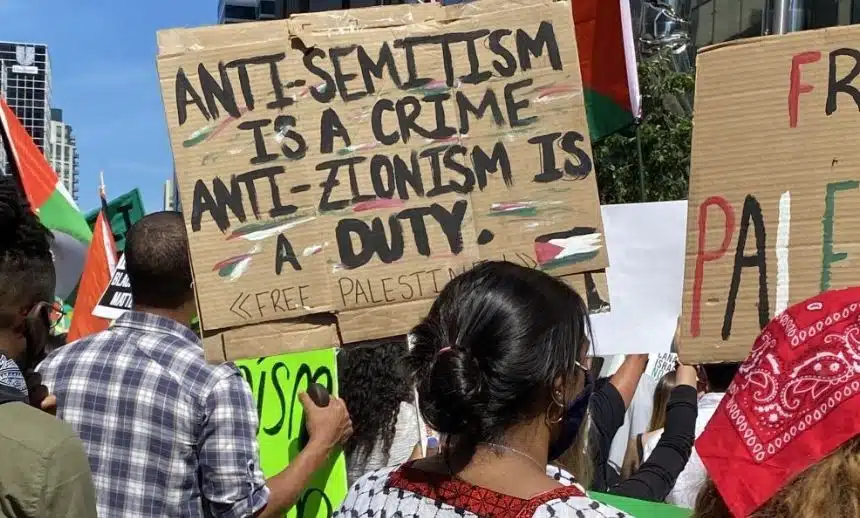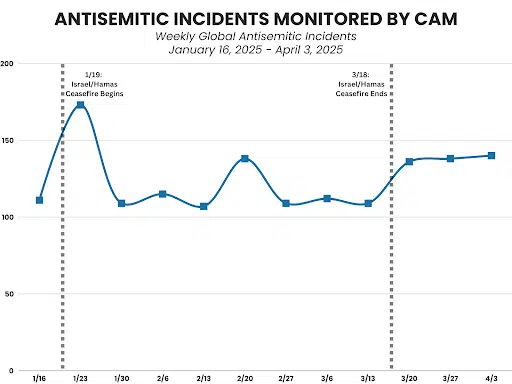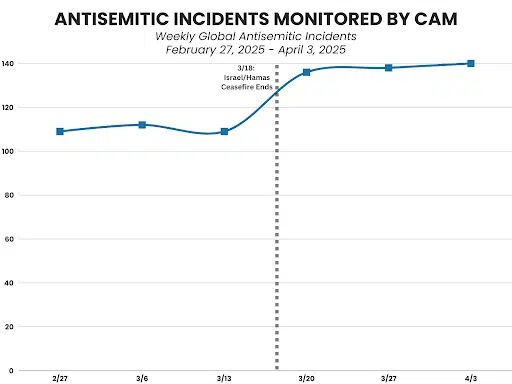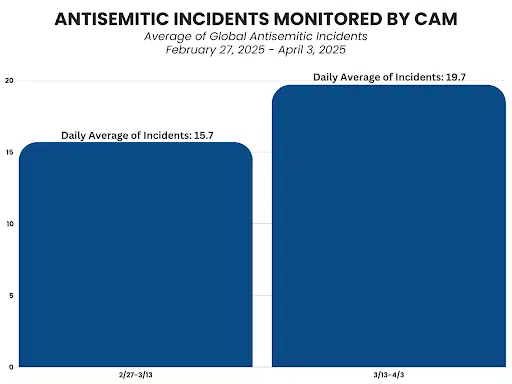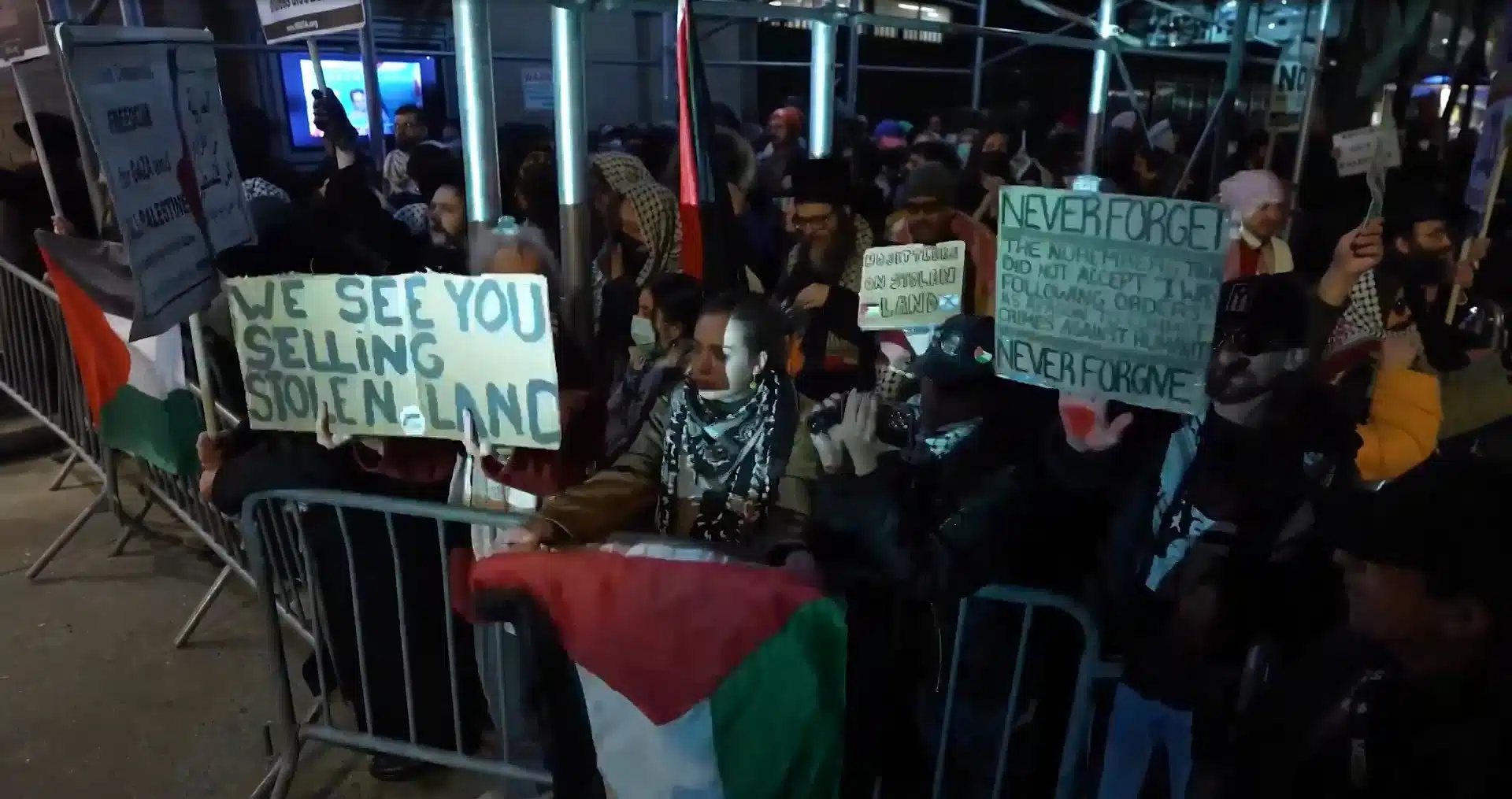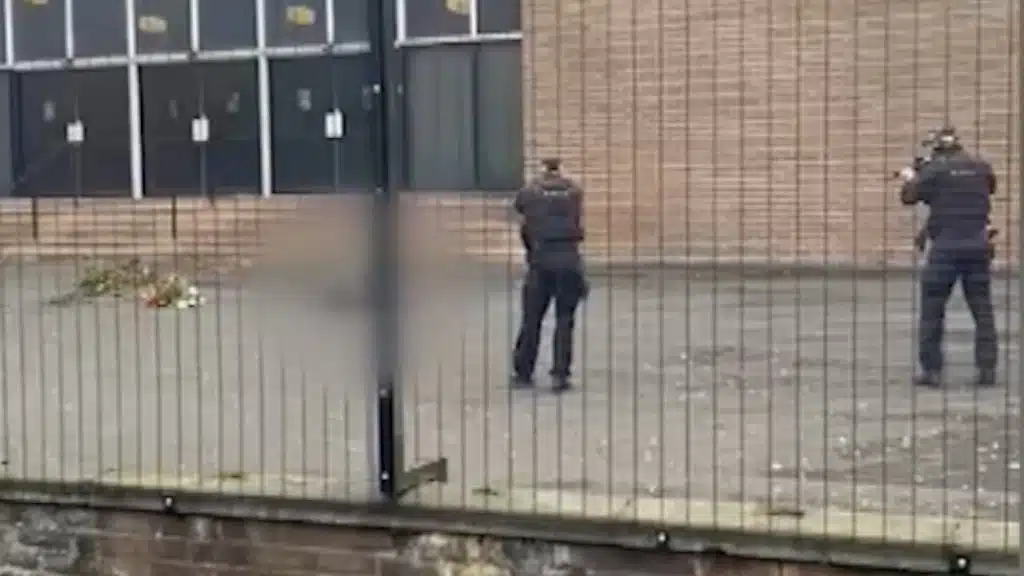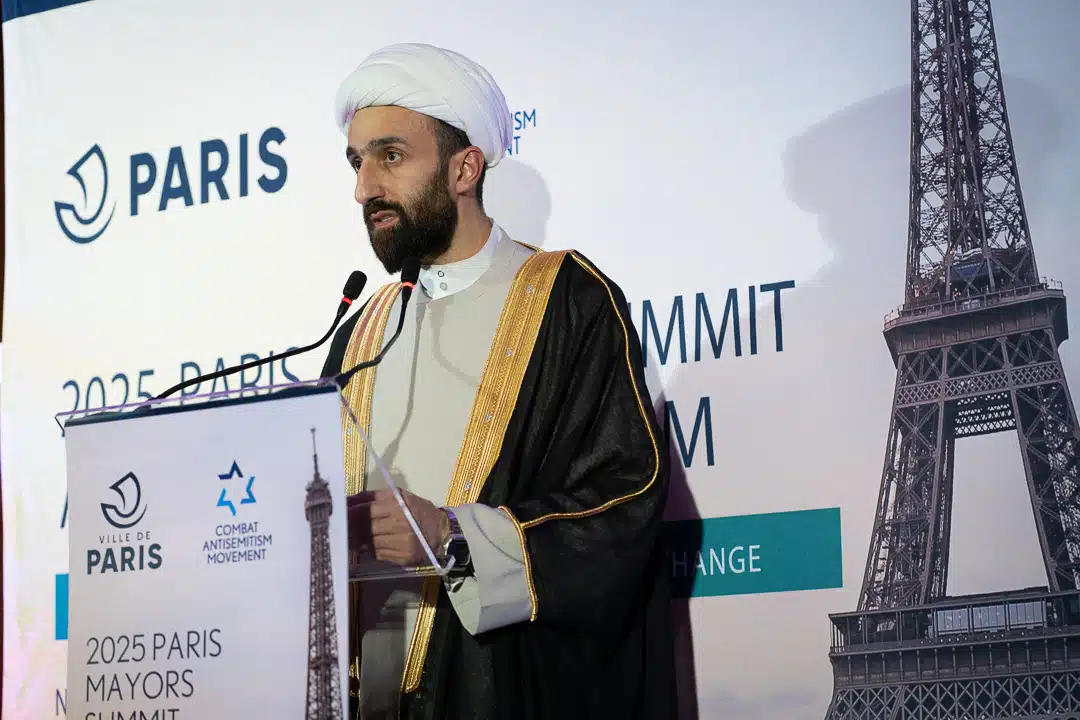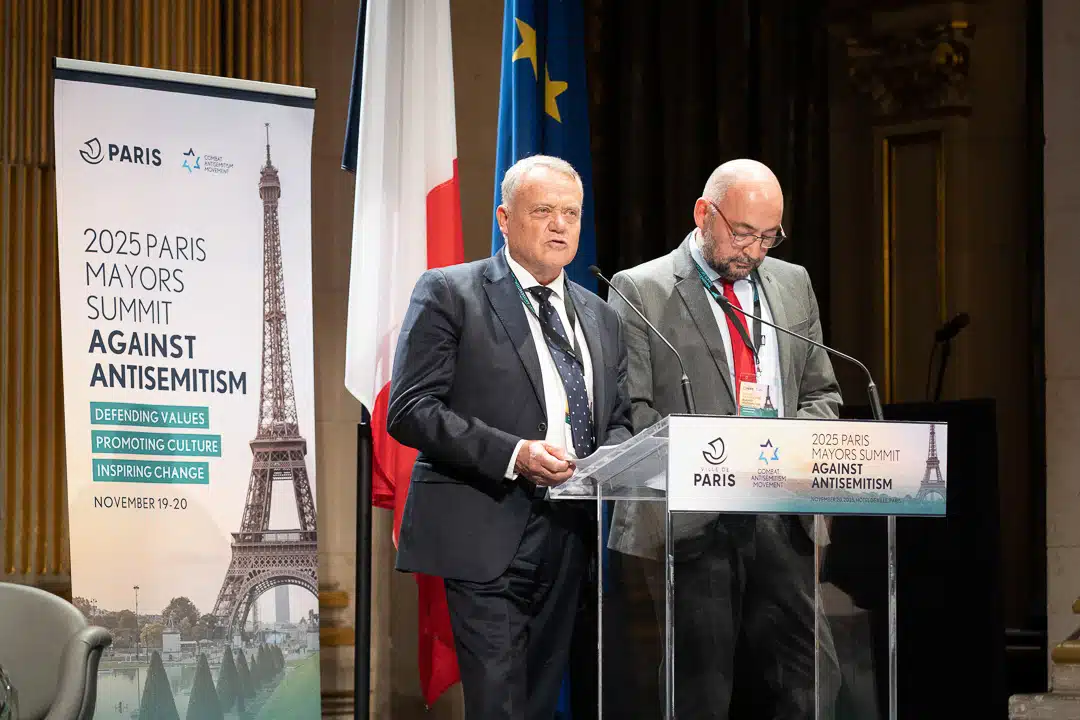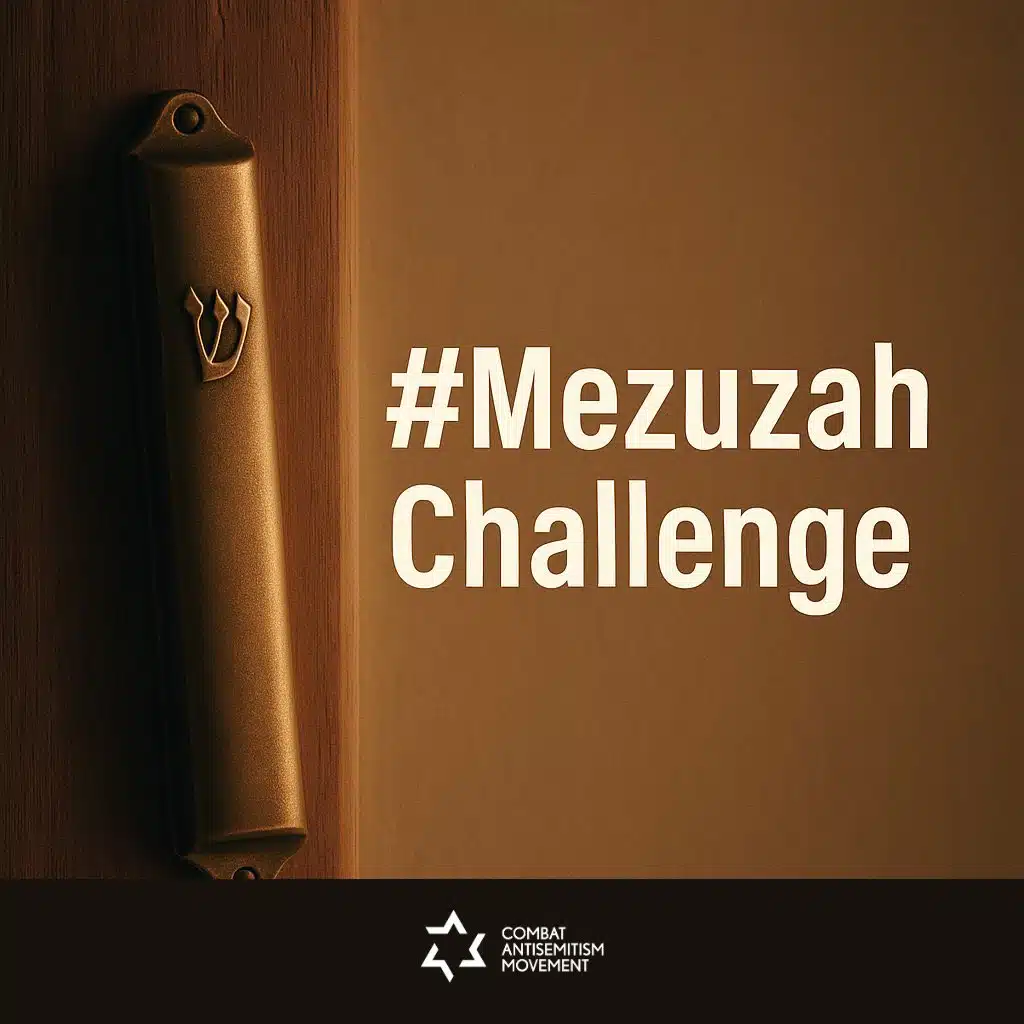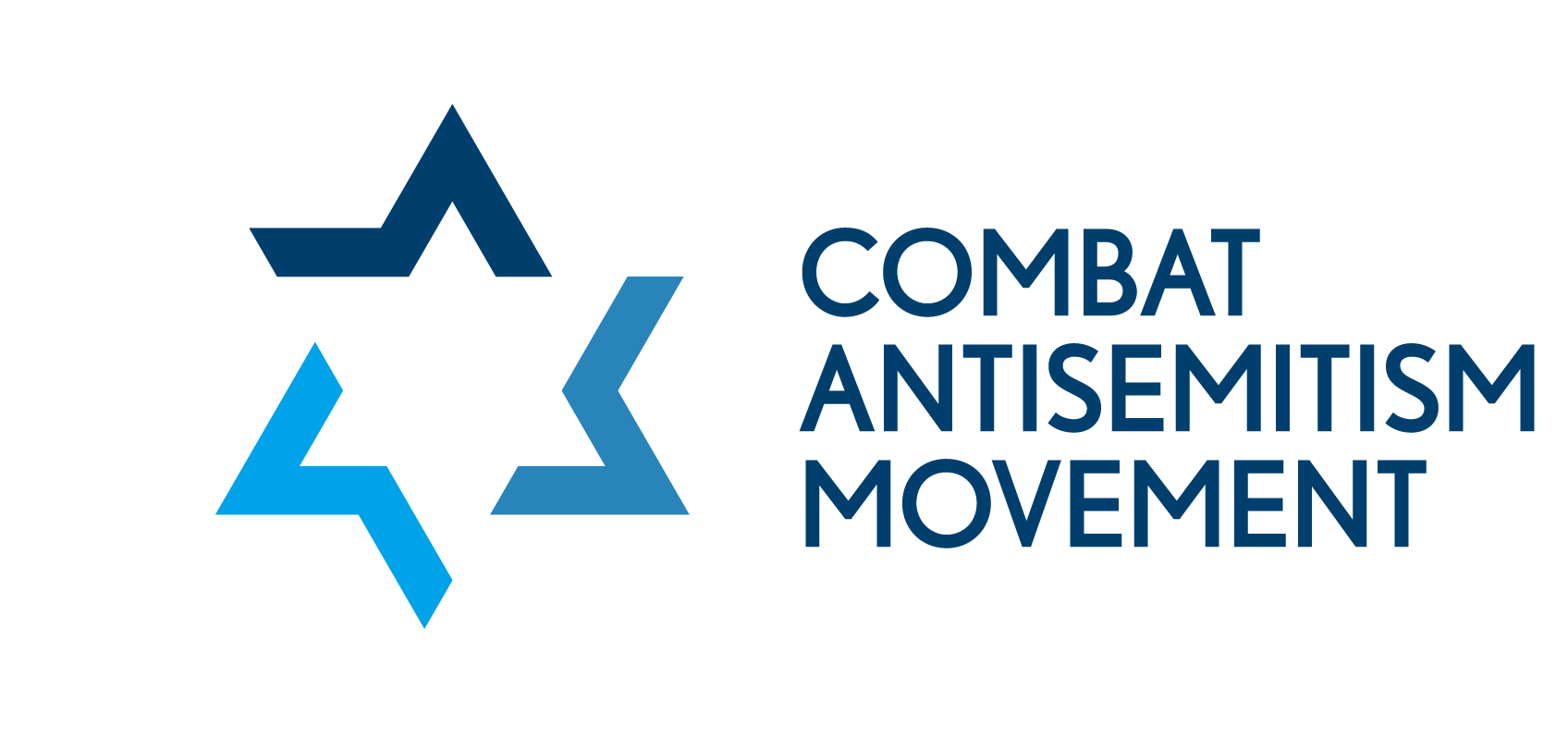|
Getting your Trinity Audio player ready...
|
The following is an analysis authored by the Antisemitism Research Center (ARC) by CAM:
A common mantra repeated ad nauseam by anti-Israel activists and protesters, non-Jews and Jews alike, is — “Anti-Zionism is not antisemitism.”
The notorious anti-Israel group Within Our Lifetime (WOL), for example, tweeted last June, “Anti-zionism is not antisemitism and any conflation of the two is detrimental to the Palestinian cause.”
With this approach, WOL and its ilk seek to create a permission structure for the violent rhetoric and imagery, as well acts of vandalism, that typify the anti-Israel movement across the globe today. Anti-Israel activists may even tell themselves that their actions target the State of Israel and not the Jewish people more broadly. However, recent global incidents data compiled by the Antisemitism Research Center (ARC) by CAM clearly refutes this line of thinking.
The numbers prove the undeniable connection between anti-Israel activities and antisemitic incidents. During periods of fighting between Israel and Hamas in the Gaza Strip, antisemites go on the attack against Jewish communities worldwide, producing a significant uptick in incidents monitored by the ARC.
The line graph below displaying the number of antisemitic incidents per week recorded by the ARC from January 16 to April 3, 2025, with the start of the most recent Gaza ceasefire (January 19) and its conclusion (March 18) denoted. During the ceasefire, antisemitic incidents largely remained stable, fluctuating between a high of 115 on the week ending on February 6 and low of 107 on the week ending on February 13, save two outliers.
During the week ending on January 23, incidents totaled 173, largely attributable to a coordinated series of 114 protests by the Iran-backed, Islamic fundamentalist Houthi terrorist organization that controls large swathes of Yemen amid the ongoing civil war there. The ideology of the Houthis is vociferously antisemitic, as demonstrated by the movement’s slogan — “God is the Greatest, Death to America, Death to Israel, Curse be upon the Jews, Victory to Islam.”
Houthi-organized protests similarly explain the slight increase in incidents reported the week end on February 20, when the group orchestrated 47 marches.
Other than these Houthi-related deviations, the weekly count of antisemitic incidents during the ceasefire period held relatively steady. However, beginning on March 20, two days after fighting resumed between Israel and Hamas in Gaza, incidents surged notably.
The ARC documented 136 incidents the week ending on March 20, 138 incidents the week ending on March 27, and 140 incidents the week ending on April 3, for a weekly average of 138 incidents. During the final three weeks that the ceasefire held, the ARC documented fewer incidents, recording 109 incidents the week ending February 27, 112 incidents the week ending March 6, and 109 incidents the week ending March 13, for a weekly average of 110 incidents. Accordingly, ARC data indicates there has been a 25.5 percent increase in the average weekly antisemitic incident count post-ceasefire.
Daily averages have increased as well after the ceasefire crumbled. While an average of 15.7 antisemitic incidents occurred per day during the last three weeks of the ceasefire, that figure rose to 19.7 antisemitic incidents per day after it broke down — a 25.5 percent rise.
Possible explanations for the correlation between the status of the war in Gaza and incidents of antisemitism worldwide include:
- The proliferation of anti-Israel propaganda on social media, especially on platforms such as TikTok. Content depicting images or videos of scenes of war in Gaza garner millions of views and foster anti-Israel sentiment that can incite antisemitic acts or hate speech.
- The faltering memory of Western societies, and inadequate historical knowledge, including lack of Holocaust education, especially among younger generations. Today, many young people in the West regard Jews not as victims of persecution and discrimination, but rather as beneficiaries of “white privilege” who themselves perpetuate oppression. In the context of the Israeli-Palestinian conflict, such thinking positions Israeli Jews as evil “oppressors” of Palestinians, despite the reality that Israel is defending itself from Hamas’ evil barbarism.
- The subsiding of a “golden age” for American Jewry. Over the past eight decades, Jews enjoyed increasing prosperity and acceptance in U.S. society, motivated by a post-World War II consensus that antisemitism was un-American. However, this reality and the taboo it placed on antisemitism may be eroding, with the October 7th massacre in Israel and its aftermath serving as an accelerant.
Each of these plausible theories likely contains some validity. American medievalist and intellectual historian David Nirenberg postulated in Anti-Judaism: The Western Tradition that antisemitism exists in the very foundation of Western civilization, thus explaining its longevity. If this is true, it would stand to reason that a potent catalyst — in this case, the war in Gaza — would exacerbate the problem.
Previous data from other antisemitism watchdogs aligns with CAM’s findings. The leading antisemitism watchdog in the United Kingdom, Community Security Trust (CST), released its 2024 annual report earlier this year, which included monthly incident data from 2013 to 2024. Both of the previous largest surges in monthly antisemitic incidents — July 2014 and May 2021 — coincided with periods of Israel-Hamas fighting n Gaza.
By refusing to release the 59 remaining hostages, surrender, and demilitarize, Hamas has chosen to continue waging a cruel war that kills both Israelis and Palestinians and fuels the spread of antisemitism worldwide.

